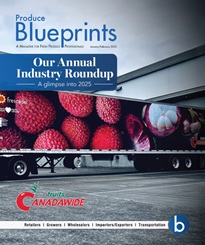For the most part, Chicago, IL-based research firm Datassential’s 2024 Industry Forecast, published in conjunction with the International Foodservice Manufacturers Association, forecasts inconsistent growth.
“Although the industry overall will see positive real growth in 2024, that growth will be felt more unevenly and there will be many losers,” the report warns.
“Consumers are more particular than ever before, and some brands will fare very well in the coming year while others will struggle” the report says. “Operators need to have a sense of their own identity and understand how to connect with today’s consumers.”
Beal believes some players in the grocery sector are stepping up. “I’m seeing our industry respond with thoughtful innovation and empathy for the consumer experience.”
But she acknowledges there’s certainly room for improvement.
“Many grocery stores could improve in-stock, labor, and supply chains. Having a consistent, fresh-looking, well-executed, and well-stocked produce and prepared foods section is key to gaining and retaining customer trust throughout the store.
“Those are the first sections customers see, and if that doesn’t look cared for, then that sentiment gets translated across the entire store,” she insists.
“Smaller format stores are popping up for a reason, not just because they’re easier to shop and need less real estate, but they also need less food and less labor to fill the shelves.
“It’s a win-win-win, and evokes more of a local, neighborhood feel,” Beal says.
Jill Overdorf, longtime marketing guru and founder of The Produce Ambassador in Torrance, CA, isn’t worried.
“The industry is filled with determined and hardy people who are pretty much unstoppable,” she asserts. “The pandemic was the great equalizer for those who were not savvy financially in business or in sourcing and ended up closed.
“But there’s been a resurgence in Covid success stories, where people launched businesses without venture capital and with a strong and sustainable business plan,” she adds.
Harris Cutler, president and CEO of grower and distributor Race-West Company BB #:156704 in Clarks Summit, PA, views the industry’s competition somewhat differently. He regards today’s success as tied to quality.
“One thing that came out of the pandemic is that excellence is the standard,” he says, believing those who focused on value pricing lost more sales than they gained.
Yet Technomic predicts that both value and premium dining will have opportunities for success going forward, with some consumers remaining sensitive to price while others are willing to spend more for a better or unique experience.
Operators in the middle, on the other hand, may face the steepest challenges.
Incremental Increases
The fortunes of different sectors within the foodservice industry continue to vary.
According to Datassential, standouts in terms of growth prospects include ghost kitchens, with a forecasted climb of 9 percent in sales for 2024, due to the demand for delivery and business advantages tied to the model, including vastly reduced operating costs over restaurants.
Other winners include foodservice for colleges and universities, projected to grow 3.0 percent in 2024. Projected growth in foodservice for younger students, K-12, is less at only 1 percent in 2024.
“The college and university market is seen as a way to build consumers,” points out Overdorf. “You have four years to mold their palate with good and healthy food.”
Interest continues to grow in K-12 schools, she adds. “It’s not boil-in-the-bag, army-green broccoli anymore.”
In the restaurant segment, most dining categories have similar though not exactly stellar growth projections for 2024: fast casual (0.9 percent), quick-service (0.7 percent), fine dining (0.7 percent), food trucks (0.8 percent), and casual dining (0.5 percent).
In retail foodservice operations, Datassential growth projections were once again small, but better than the alternative: supermarkets at 0.9 percent and both convenience and club stores at just 0.2 percent in 2024.
All told, restaurants will have an estimated 68-percent share of total consumer foodservice spending in 2024, with retail at about 10 percent, and onsite foodservice with a 22-percent share.
Beal says one way grocers can build their share of the foodservice market is through more creative snack ideas, sides, and meals, along with innovative packaging.
“Packaging is a shining star amongst foodservice,” she notes. “Extending shelf life is a great example: modified atmosphere packaging (MAP) and high-pressure processing have really expanded for longer shelf life salads, meals, vegetables, proteins, dips, desserts, etc.
“Longer shelf life means less waste for stores and customers,” says Melodie Beal, head of culinary development for Amazon Fresh BB #:283186.
“We’re seeing customers load up on products they hadn’t thought of before—purchasing a week’s worth of MAP salads or individual meals for lunch, being able to plan ahead with marinated proteins for weekend meal prep, or greater spontaneity by having various dips, dressings, precut veggies, and charcuterie available in the fridge for snacking or unexpected company.
“I’m also seeing more value-add in thoughtful packaging designs—cook- or heat-in-bag roasted meats, vegetables, and grains—meals that can heated in the microwave or oven.”
This is an excerpt from the feature story of the July-August issue of Produce Blueprints Magazine. To read the whole issue, click here.



